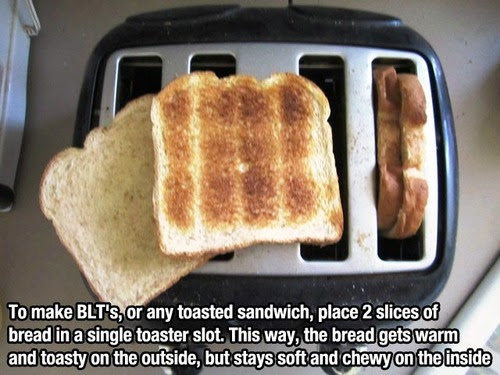On December 26, 2013, a Volvo B9R bus crashed head long into a goods truck at Pachampalayam, about 120 kms before Erode, at about 1 am early morning. There were no severe injuries or deaths, the cleaner suffered injuries and some passengers had minor bruises. The bus was registered KA 01 AA 17 to Shama Travels, and was travelling from Bangalore in Karnataka to Pattanamthitta in Kerala, via Kottayam. It has started from Bangalore at 8:30 pm on Dec 25th. The driver of the crashed Volvo arranged for alternate bus for the passengers to travel from the place the accident occurred to final destination, the replacement bus departed at 3 AM in the morning from Pachampalayam.
Now how do I know about this ? This news was never reported by any media, not even the papers covered it.
Simple. I was on the bus. On the night of Christmas, 2013, I booked a bus to travel home to my hometown of Thrissur from Bangalore to spend a well earned vacation.I was one of the 45 passengers in the bus who had to endure the accident and the delay. It was my first road accident, I have been driving bikes and cars for the last 10 years and never had an accident. This first experience was on a comfortable Air Conditioned bus , driven by an experienced driver on a regular route, and there was close to NO traffic in the area when it occurred, because it took place on a highway at 1 am in the morning.
Now here it the bummer: this was not they bus I was booked for. My bus was to start from Bangalore at 9:30 PM on the same night. I simply turned up 1 hour early at the departure station. The staff member there told me the 8:30 pm bus is just about to start, and that there were two seats empty. I could travel on it if I wanted. The thought of reaching home one hour earlier made me take up the offer without hesitation.
The bus was full of families, the travellers, like me, obviously could not reach home just in time for Christmas , because of ticket shortage and over priced tickets. So they had decided to make the smart move of travelling one day later. There were Moms and Dads and kids and grandparents. There were students travelling home. There were even some ayyappa devotees travelling solo to Sabarimala. The bus was missing it’s usual sprinkling of tourists, which is an otherwise a common sight on such routes. The bus made a dinner stop in Tamil Nadu itself at 11 pm.
At about 1 am in the morning, I was thrown from my seat , and there was a loud sound of the bus hitting an immovable object. I hurt my leg on the seat in front of me. One by one, the passengers started crying, and yelling the driver to “Stop !!”. It had turned pitch black, but we could see the front of the bus covered in yellow glow. The bus had actually hit the goods truck in its front, and was still kind of connected to it, travelling the same way like a connected bogies of a train. But the yellow glow in the front made some of us assume that the front of the bus was on fire. Panic, instant panic followed.
On October 30, 45 passengers were burnt alive as their Bangalore-Hyderabad Volvo bus burst into flames after its fuel tank caught fire on hitting a culvert at Mahbubnagar in Andhra Pradesh.
In another incident on November 14, seven passengers were killed and 40 injured when a Bangalore-Mumbai bus caught fire after hitting a road median at Haveri in Karnataka.
Both these accidents were heavily covered and reported by media, and obviously the incident was fresh in the memories of all the travellers in my bus too. When we saw the yellow glow in the front of our bus, we all assumed we too were destined for the same fate. People immediately started making for the emergency exit, but we found the hammers usually attached to the windows to break open the glass was missing. I tried to find any smell from burning wood or rubber, or even of leaked fuel, but could not find any. That was a slight relief, but we were still in danger. Even after repeated cries to the driver to stop the bus, he did continued to move the vehicle , still connected to the truck in front. After about 1 minute of driving, he bought the bus to full stop on the left side of the road.
Now that the bus had stopped, people were trying to get out. The to front left side of the bus, right next to the driver’s seat, had hit the truck in the front. That’s where the door is. The only proper door on the bus was crashed, and was inoperable. The emergency exits too were useless. It was pitch dark still, and the road too was dark. The only way to get out was through the front, the window was shattered, and had come apart, there was space big enough for people to jump through.
Surprisingly, and thankfully, we got local help. There were still people from other trucks which had stopped for the night, and they rushed to our help. A group of them got another truck to face ours and turned on its headlights. We now had sufficient light to make our way out. They then brought down the complete front end of the bus and moved the truck away. Then they climbed in and began helping the passengers to get out. All the while, they were enquiring if there was anyone hurt or needed special help in getting out. For the first time after the accident, I felt a little calm, knowing that help was close at hand. The bus was obviously not on fire, and someone had called the police and ambulances were on their way.
Once I got out, I limped to the side and sat down getting my thoughts together .I couldn’t believe my luck, I had hurt my knee, but it was a small price paid in place of my life. I thought of calling home, but knew this would worry them as well. It was still only 1:30 AM in the morning. Passengers know began wondering how to get home now. I pulled out my boarding pass, and began dialing the Shama Travels helpline numbers provided on them one by one. The first two were numbers no longer in use. But the third one rang, there was a delay, but finally the other side picked up. A certain Mr Shankar answered the call on 9995891464. He spoke malayalam, and I calmly told him that their bus had an accident. He enquired first of the passengers, asking if anyone was hurt. Then he asked if the location of the accident, and of the driver, so that he could get more information. By this time, an ambulance had come and had taken the cleaner away. He assured me he would make arrangements to transport all the passengers to their destination.
It was still only past 2 AM. Two more Shama Travels buses bound to Kerala from Bangalore stopped to assess the damage, and they carried 4 of the passengers in their vacant seats. It would be another 1 hour before three buses bound the opposite way stopped. Three buses travelling from Kerala to Bangalore stopped on the opposite side. Now the drivers of these buses began discussing among themselves and with their superiors in Shama travels. Between the three of them, they had enough vacant seats to accommodate all the stranded passengers. They emptied out one bus, and moved the travellers to the other two buses. They then turned the vacant bus around to point to Pattanamthitta, back to kerala. In about 15 minutes, we were all aboard the new bus, everyone seated on their previously allocated seat numbers. At about 3 AM, the bus departed to Kerala from Pachampalayam.
I must mention here that the help and support we received from the drivers of all the buses, from Mr Shankar, together with the local support was phenomenal. I had heard stories of people being stranded by the travel officials, and passengers having to arrange for their remaining travel themselves. Thankfully, this was not such a day.











































































































